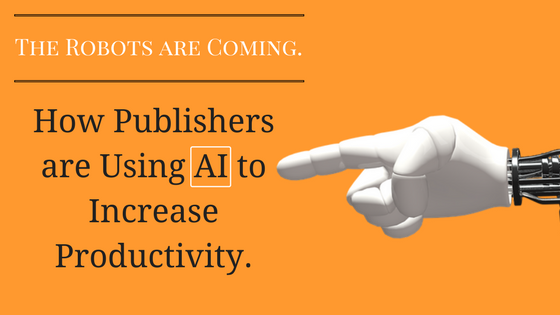We all know Artificial Intelligence (AI) is growing, but what is its future in publishing?
AI’s greatest power lies in its ability to minimize mindless repetitive tasks – the types of tasks that publishers hate – freeing up time and resources for their human counterparts in Circulation, Ad Sales, & Editorial and enabling them to be more productive.
For instance, Ebner Verlag Publishing Group’s Circulation department is integrating machines and algorithms to tag and match relevant products to certain readers subsequently increasing subscription sales. In fact, 17% of their readers that are led to the shop by algorithms are making purchases compared to an e-commerce average conversion rate of 1-2%.
These revolutionary technologies are boosting the capability of publications to create and deliver more personalized experiences to and for consumers in increasingly fragmented markets. AI can help deliver relevant content to niche markets and individual users with ultimate precision.
Data crunching services like MediaRadar, which reduce the time spent on conducting tedious research, empower ad sales reps to focus on building business relationships and closing more deals. This form of AI can help increase sales by 18% or more.
As outlined, AI is gathering and categorizing data faster, better and more efficiently than humans. A clear example of this is the Associated Press’ Editorial Department, who use AI in content creation. They use this technology to produce data-driven news stories on topics like minor league baseball.
AI can be great for data, but it can’t do everything. The Associate Press still employs writers to produce thought pieces on players and teams.
The critical reason AI can’t become an autonomous employee is:
- In publishing, AI operates based on concrete and quantifiable data, making decisions without considering human feelings. However, the most effective decision makers don’t act on numbers alone, they think through problems closely considering human relationships, emotions and repercussions.
At the end of the day, think of AI like you would Google Maps. It is more useful in finding a route in real-time because it can calculate many variables faster than any person, but it can neither drive nor decide where you want to go. In essence, AI and similar technologies can be used as tools for people – not replace them… yet.



